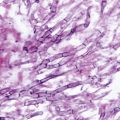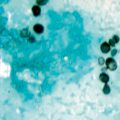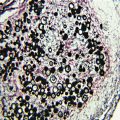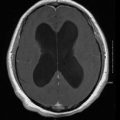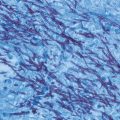Population
Assay
Study design
Sensitivity(%)
Specificity(%)
Commentsb
Ref.
All
Any
Meta-analysis of 16 studies: 2979 patients; 594 with proven/probable IFI. Excluded diagnosis of PCP
77
85
One positive test required; study population = 11 hemato-oncologic; five at risk for IC; one transplant; one miscellaneous; test performance for detection of IC and IA was similar
[4]
Any
Systematic review and meta-analysis of 31 studies: uncertain number of patients
80
82
One positive test using the test cutoff that offered the best test performance in each individual study; diagnostic accuracy was similar for IC versus. IA; sensitivity and specificity were lower (72 and 78 %, respectively) when analysis restricted to 17 cohort studies
[5]
High-risk hemato-oncologic
Any
Systematic review and meta-analysis of six cohort studies: 1771 patients analyzed; 215 had proven or probable IFI
62
91
One positive test required
[6]
50
99
Two consecutive positive tests required
High-risk intensive care unit (ICU)
Fungitella
Prospective cohort: 95 ICU patients with length of stay > 5 days; 16 with IFI (IC = 14)
93
94
One positive test required; analysis performed for proven IC only
[18]
Fungitella
Prospective cohort: 57 ICU patients, nine developed proven/probable IC
91
57
One positive test required; many false positives occurred on the initial sample (ICU day 3); omitting these samples and requiring two consecutive positive samples increased sensitivity and specificity to 90 and 80 %, respectively
[11]
Fungitella
Prospective, randomized: 64 ICU patients, six developed proven/probable IC
100
75
Two sequential positive tests required; those with positive tests received empiric antifungal (anidulafungin) therapy
[10]
At risk for PCP
Any
Meta-analysis of 14 studies: 1723 controls (with other medical conditions) and 357 PCP cases
95
86
One positive test using test cutoffs according to (or closest to) the manufacturers’ instructions required; HIV status did not impact accuracy
[6]
Any
Systemic review and meta-analysis of 12 studies: uncertain number of patients
96
84
One positive test using the test cutoff that offered the best test performance in each individual study; HIV status did not impact accuracy
[5]
Diagnosis of IFI in High-Risk Hemato-Oncological Patients
The meta-analysis described above for IFI detection included a majority of studies involving the hemato-oncologic patient population. Limiting discussion to this population only, however, BG evaluation in case-control studies has demonstrated a wide range of sensitivity (50–90 %) and specificity (70–100 %) [15–17]. BG assessments in the cohort study setting, which more closely reflects the real world performance of the test, have been performed. These cohort studies are the subject of a systematic review and meta-analysis which evaluated the diagnostic accuracy of BG in high-risk adult hemato-oncological patients. Of the six studies meeting inclusion criteria, the diagnostic performance of two consecutive BG assays was superior to the performance of one test alone for the diagnosis of proven or probable IFI; the sensitivity and specificity of two consecutive positive tests were 49.6 % (95 % CI, 34.0–65.3 %) and 98.9 % (95 % CI, 97.4–99.5 %), respectively [3]. When a threshold of only one positive test was applied, the BG sensitivity and specificity were 61.5 and 90.8 %, respectively. The most common IFIs detected in the six studies were invasive aspergillosis (n = 90), invasive candidiasis (n = 80), PCP (n = 14), and other (n = 31). Importantly, similar accuracy was noted across all four available BG assays. The use and interpretation of BG must be mindfully considered in context of local factors specific to a hemato-oncologic program’s fungal prophylaxis and detection strategy.
Diagnosis of IFI in High-Risk Intensive Care Unit (ICU) Patients
Several reports have evaluated BG for diagnosis of IFI, primarily invasive candidiasis (IC), in the ICU setting. In a prospective study of 95 nonneutropenic ICU patients with signs of sepsis and a length of stay > 5 days, 16 (17 %) were diagnosed with IFI (14 IC, one aspergillosis, one fusariosis). In this setting, a single BG test demonstrated 94 % sensitivity and 93 % specificity; moreover, for all 13 candidemia cases, the BG assay was positive 24–72 h before a positive blood culture result [18]. Mohr et al. evaluated BG in 57 consecutively enrolled surgical ICU patients, of whom nine had proven or probable IC [11]. Overall, when only one positive sample was required, the sensitivity and specificity of the BG for IC were 91 and 57 %, respectively. Many of the false-positive tests occurred early during the ICU stay (day 3), a finding that requires further examination. BG performance was much improved (sensitivity 90 %; specificity 80 %) if the samples obtained within 72 h of ICU admission were omitted and two consecutive positive samples were required. Finally, a prospective randomized pilot study was performed and involved 64 ICU patients, six of whom developed proven or probable IC [10]. Optimal assay performance in that study was found to use two sequential positive BG tests; the sensitivity for IC was 100 % and specificity 75 %. Subjects randomized to the intervention group with two positive BG tests received preemptive anidulafungin therapy, which was safe and well tolerated (the study was not powered to detect clinical outcomes). The utility of BG as an adjunctive test in the ICU setting remains to be fully evaluated.
Diagnosis of Pneumocystis jirovecii Pneumonia
BG assay has also been evaluated for the detection of PCP. Two large meta-analyses were performed to evaluate the diagnostic accuracy of BG for PCP. The first report evaluated 12 studies and found a pooled sensitivity and specificity of 96 and 84 %, respectively [5]. This study found nominal differences when test performance was stratified according to HIV status, assay type (Fungitell vs. Fungitec G test), study design (cohort vs. case-control), and methodological quality. A subsequent meta-analysis of 14 studies (nine of which were included in the first meta-analysis) evaluating 357 PCP cases and 1723 controls found BG to have a sensitivity of 95 % and specificity of 86 % [6]. All studies in this setting relied upon only one positive BG test. Given the high sensitivity, BG testing may be sufficiently sensitive to effectively exclude a diagnosis of PCP without bronchoscopy.
Conclusions and Recommendations
See Box 5.1 for recommendations on how test use is recommended. More data regarding the optimal use of BG in various clinical scenarios is undoubtedly forthcoming.
Box 5.1 Recommendations for using the serum 1,3-β-d-glucan (BG) assay
1.
A positive test generally indicates IFI but is not pathogen-specific; always interpret the results in the context of other clinical and laboratory findings.
2.
Serum BG can be employed as part of IFI surveillance in a similar fashion to serum GM (e.g., perform 1–2/week on at-risk hemato-oncologic patients). The test has moderate accuracy in this setting.
3.
Serum BG appears to be a sensitive test when incorporated into a screening protocol for ICU patients at high risk for invasive candidiasis (IC). However, one positive test alone, particularly early in the ICU course, may be falsely positive and should ideally be confirmed with a second test.
4.
Serum BG has excellent performance characteristics for the diagnosis of PCP and may be particularly helpful in ruling out disease for patients suspected of PCP when BAL fluid cannot be readily obtained.
Candidiasis
Candida species are now the fourth most common microorganism isolated from the bloodstream of hospitalized patients in the USA and sixth most common nosocomial pathogen overall [19]. Rapid detection of IC is critical and warrants the development of nonculture diagnostic approaches. Recent attention has focused primarily on the pan-fungal BG assay (discussed above), while other Candida-specific investigations (discussed below) have garnered less success.
Antibody Detection
Antibody detection assays were the area of earliest interest but yielded tests with poor sensitivity and specificity. These tests have since fallen out of favor and are not recommended for routine use.
Antigen Detection
Several tests that target a variety of cell wall and cytoplasmic components have been developed to detect macromolecular Candida antigens (Table 5.2). Some of these are no longer available, such as an assay to detect enolase antigen. Of the available tests, the earliest was the Cand-Tec LA assay (Ramco Laboratories, Stafford, TX), which was designed to detect circulating Candida antigen in patients with serious, disseminated infection. Unfortunately, there are conflicting reports on its overall sensitivity and specificity, especially in patients with renal failure or rheumatoid factor positivity, making it difficult to confirm the diagnosis of candidiasis by the Cand-Tec assay alone [20, 21].
Table 5.2
Studies of serum immunological assays for Candida infection (excluding BG)
Target | Assay | Population tested | Sensitivity | Specificity | Comments | Ref. |
|---|---|---|---|---|---|---|
Antigens as detected by | ||||||
Unknown | Cand-Tec LAa | Retrospective case control: 39 candidemia cases; 40 controls (20 healthy volunteers, ten patients with Candida colonization only, ten patients with other deep mycoses) | 77 % | 88 % | Titer of 1:4 considered positive | [20] |
Prospective cohort of patients at risk for IC: 202 patients; 23 developed IC | 70 % | 69 % | Titer of 1:4 considered positive | [21] | ||
Mannan | Pastorex LAb | As above | 26 % | 100 % | – | [20] |
Retrospective case control: 43 cases of proven IC; 150 controls included ICU patients, patients with other deep mycoses, and healthy volunteers | 28 % | 100 % | – | [22] | ||
Platelia Candida Antigen EIAb | Per-patient analysis of 14 studies (13 retrospective) including 453 patients (proven/probable IC) and 767 controls (healthy volunteers and high-risk patients without IC). The population studied was split (seven studies mainly hemato-oncologic; seven studies mainly ICU/surgery) | 58 % | 93 % | Cutoffs used were adopted from the primary study and varied Combined testing performance was superior | [23] | |
Platelia Candida Antibody EIA | 59 % | 83 % | ||||
Platelia Candida Antigen and Antibody EIAb | 83 % | 86 % | ||||
Platelia Candida Ag Plus EIA | Retrospective case control: 56 candidemia cases; 200 controls (100 bacteremic, 100 nonbacteremic) | 59 | 98 | Cutoffs used per manufacturer’s recommendations; C. parapsilosis and C. guilliermondii were not detected by Platelia Candida Ag Plus; BG in comparison: sensitivity 88 %, specificity 86 % | [24] | |
Platelia Candida Ab Plus EIA | 63 | 65 | ||||
Platelia Candida Ag/Ab Plus EIA | 89 | 63 | ||||
Metabolites as detected by | ||||||
D-arabinitol | Enzymatic–chromogenic | Prospective analysis of high-risk oncology patients and control patients that included those with fever, neutropenia, and mucosal colonization with Candida but no culture evidence of IC, and those without these and also without culture evidence of IC | 31/42 (74 %) | 178/206 (86 %) | Candidemia patients | [25] |
25/30 (83 %) | – | Persistent candidemia patients | ||||
4/10 (40 %) | – | IC patients w/o candidemia | ||||
7/16 (44 %) | – | Deep mucosal candidiasis patients | ||||
Enzymatic-fluorometric | Retrospective evaluation of patients with candidemia and healthy control patients | 63/83 (76 %) | 89/100 (89 %) | Candidemia patients | [26] | |
25/30 (83 %) | – | Persistent candidemia patients | ||||
The mannan component of the Candida cell wall is a major antigen and the target of many serum detection assays. These assays vary in the laboratory method and type of antibody used for antigen detection. Two tests that use the same monoclonal antibody are the Pastorex Candida LA test (Bio-Rad, Marnes-la-Coquette, France) and the Platelia Candida Antigen EIA test (Bio-Rad, Marnes-la-Coquette, France). Although the EIA test is more sensitive than the LA test, they are both limited by the rapid clearance of mannan antigenemia. In an effort to overcome this, an anti-mannan antibody EIA was developed and marketed individually (as the Platelia Candida Antibody test) and combined with the Platelia Candida Antigen (as the Platelia Candida Antibody and Antigen test) [22]. In a review of 14 studies that evaluated the three Platelia Candida assays, the pooled per-patient sensitivity of the Platelia Candida Antigen, Platelia Candida Antibody, and both tests combined was 58, 59, and 83 %, respectively, while the corresponding specificities were 93, 83, and 86 %, respectively [23]. Both Platelia Candida tests have been recently refined and are now marketed as Candida Ag Plus and Candida Ab Plus. In one initial evaluation of their performance using a case–control design, their sensitivity and specificity were, respectively, 59 and 98 % for Candida Ag Plus, 63 and 65 % for Candida Ab Plus, and 89 and 63.0 % for the tests combined (Candida Ag/Ab Plus) [24]. Further evaluation of the newer test is warranted before widespread clinical application.
Detection of Fungal Metabolites
D-arabinitol (DA) is a five carbon polyol metabolite that is produced by several pathogenic Candida species (except for C. krusei and C. glabrata). It has been shown to be present in higher serum concentrations in humans and animals with IC than in uninfected or colonized controls, making it potentially useful as a diagnostic marker for IC. There are two general methods to measure DA: gas chromatography or an enzymatic method. The former is labor intensive and not readily available in most hospital laboratories, while the latter is more suited to a commercial test kit, as is currently marketed in Japan as Arabinitec-Auto (Marukin Diagnostics, Osaka, Japan). This assay is also available for DA testing on urine samples. Several studies have shown that DA can be detected earlier than the presence of Candida in blood cultures and that serial measurements correlate well with clinical response to therapy [25, 26].
Conclusions and Recommendations
Immunodiagnostic tests are promising additional diagnostic strategies in the detection of IC, but they have yet to supplant traditional methods. In general, there appears to be utility for serum BG, serum mannan antigen/antibody, and serum DA as adjunctive tests in combination with cultures, histopathology, and radiology. As yet, no single test has been demonstrated to have optimal sensitivity and specificity. Their greatest value appears to be in serial testing of high-risk populations where the trend (rather than a single value) will allow an earlier, accurate diagnosis and monitor the effectiveness of empirically instituted antifungal therapy. An emerging strategy is to use these tests in combination with one another and/or molecular assays to optimize a diagnostic approach to these complex patients. Further, rigorous, prospective clinical trials are needed to determine which tests or combinations thereof will offer the greatest clinical utility.
Aspergillosis
There are a variety of clinical manifestations of aspergillosis, including aspergillomas, allergic bronchopulmonary aspergillosis (ABPA), chronic invasive aspergillosis, and IA. Different types of immunologic tests have shown different utility for this spectrum of disease.
Antibody Detection
The diagnosis of aspergilloma is made by combined radiologic and serologic testing, where IgG antibodies are usually positive. Similarly, for ABPA, a combination of routine blood tests, radiographic findings, skin testing for Aspergillus sensitivity, and both IgG and IgE antibody positivity are used for diagnosis. Conversely, antibody detection is less useful and not recommended for invasive disease since the immunocompromised patients most at-risk are less likely to mount a sufficient response.
Antigen Detection
Galactomannan (GM) is a polysaccharide component of the Aspergillus cell wall. It has been demonstrated in the serum of some patients with IA and thus has been the target of several serum detection assays. An earlier test called the Pastorex Aspergillus (Bio-Rad, Hercules, CA) utilized an LA method with a monoclonal antibody. This test yielded disappointing results with low sensitivity unless multiple samples were used and false-positive reactions from cross-reactivity of the antibody with several other fungal species (see Table 5.3) [27, 28]. A newer, commercially available test is the Platelia Aspergillus Ag (Bio-Rad, Hercules, CA). This sandwich ELISA uses the same monoclonal antibody but has the ability to detect GM at much lower limits, thereby improving the test’s sensitivity and allowing earlier detection of IA. In a retrospective review of stored serum specimens on bone marrow transplant and leukemia patients, the study leading to its FDA approval, this assay had a sensitivity of 81 % and specificity of 89 % [29]. However, subsequent investigations have shown a lower sensitivity; for example, a meta-analysis of 27 studies of the Platelia Aspergillus assay in serum, performed in the setting of repeated surveillance in high-risk patients, demonstrated an overall sensitivity of 61 % and specificity of 93 % in proven or probable IA cases [30]. The sensitivity of the test, when limited to proven cases only, was 71 %. In subgroup analyses, the sensitivity was 79 % in those studies which reported using an optical density (OD) cutoff at the US FDA-cleared threshold of 0.5 (as opposed to a higher OD cutoff of 1 or 1.5; n = 5). GM test performance is best in the hemato-oncologic population and is less sensitive in solid organ transplant patients [30]. An emerging role for serum GM testing is to monitor treatment response; several recent reports have demonstrated that the trend of GM during therapy predicts outcome [31–33]. False-negative results can occur due to limited angioinvasion, low fungal load, high antibody titers, or the use of prophylactic or preemptive antifungals. Alternatively, false positives occur due to cross-reactivity of the assay with other fungal species, co-administration of pipercillin-tazobactam, or several fungal-derived antibiotics.
Table 5.3
Studies of Aspergillus galactomannan antigen detection
Assay/body fluid | Study design and population | Sensitivity (proven/probable IA)(%) | Specificity (not IA)(%) | Comments | Ref. |
|---|---|---|---|---|---|
Pastorex LAa/serum | Retrospective cohort: 61 at-risk neutropenic patients; ten developed proven or possible IA | 70 | 86 | A single positive test (only) required ELISA also performed: 90 % sensitive, 83 % specific | [27] |
Retrospective cohort of 215 at-risk bone marrow transplant recipients: 25 proven IA, 15 probable IA, and eight indeterminate infection cases | 27 | 100 | A single positive test (only) required ELISA also performed: 93 % sensitive, 82 % specific | [28] | |
Plateliaa ELISA/ Serum | Meta-analysis of 27 studies –21 prospective; six retrospective –23 hemato-oncologic; 3 SOT; one not specified –GM sampled in at-risk patients 1–2/week in all studies | 61 | 93 | Positive tests required: 1 (11 studies); 2 (16 studies) Proven cases only: sensitivity 71 %, specificity 89 % SOT subgroup: sensitivity 41 % Sensitivity by OD cutoff for positivity: 79 % for 0.5; 65 % for 1.0; 48 % for 1.5 | [30] |
Platelia ELISA/ BAL | Meta-analysis of 30 studies –14 prospective; 16 retrospective –12 hemato-oncologic; 4 SOT; 14 other –GM typically performed as part of a diagnostic BAL | 87 | 89 | One positive BAL GM required OD ≥ 0.5 available in 24 studies and used for primary analysis OD ≥ 1 (21 studies) performance: sensitivity 86 %; specificity 95 % Serum GM: 65 % sensitive; 95 % specific | [37] |
Platelia ELISA/ BAL | Systematic review of 19 studies for PCR -7 compared PCR to GM (OD ≥ 0.5) -75 % of population was hemato-oncologic | 82 | 96 | Reference standard imperfect: positive GM or PCR | [38] |
The Platelia Aspergillus assay was FDA-cleared for use on bronchoalveolar lavage (BAL) fluid in 2011, and its use has increased due to the improved sensitivity (generally > 75 %) as compared to serum across various patient populations [34–36]. A meta-analysis of 30 studies demonstrated a sensitivity of 87 % and specificity of 89 % for the BAL-GM [37]. In a systematic review of seven studies comparing BAL GM (OD cutoff 0.5) to Aspergillus PCR, BAL GM performed similarly; BAL GM sensitivity and specificity were reported as 82 and 97 %, respectively [38]. As with serum GM, test performance depends on the selected OD cutoff required for test positivity (FDA-cleared at 0.5). While specificity is improved, sensitivity is sacrificed if higher OD cutoffs (e.g., 1.0 or 1.5) are used to indicate a positive result. Though it can be detected in other body fluids, the GM assay is validated only for serum and BAL samples at this time.
Detection of Fungal Metabolites
Mannitol, a six-carbon acyclic polyol is produced in large amounts by many different fungi, including several Aspergillus species in culture. Unfortunately, available data do not support the usefulness of mannitol as a diagnostic marker.
Conclusions and Recommendations
Despite the broad spectrum of disease caused by Aspergillus organisms, it is the invasive disease that is most important and most challenging diagnostically. The Platelia Aspergillus assay supports a diagnosis of IA in the appropriate clinical setting. This serum test has shown increased specificity with serial sampling and is ideally used to screen patients on a weekly or twice weekly basis during periods of severe immunosuppression and may be useful to monitor patients on therapy. All clinicians should keep in mind the potential for false positive and negative results and incorporate the GM results into the general clinical assessment of the patient, rather than as the sole basis on which to change management. For instance, a change in the assay from negative to positive in an immunosuppressed patient under surveillance should prompt a more thorough investigation for IA, while a change from positive to negative should lend support to other evidence that proper therapy has been instituted. Additionally, it is important to remember that the positive predictive value of this test is highest in populations with a high pretest probability; using it for routine diagnosis in lower risk populations will likely increase the chance that a positive result is a false positive. Also, BAL fluid GM testing demonstrates very good sensitivity and specificity although similar cautions regarding test interpretation should be considered. Despite its limitations, this assay is a suitable, noninvasive adjunct for diagnosing and managing IA (see Box 5.2 for recommendations).
Box 5.2 Recommendations for using the Platelia Aspergillus galactomannan (GM) ELISA assay
1.
Serum GM is ideally used as a part of IA surveillance and performed once ot twice /week on at-risk hemato-oncologic patients. The test has moderate accuracy in this setting.
2.
BAL GM is a useful adjunctive diagnostic test for at-risk patients presenting with compatible clinical illness. The test has moderate-to-high accuracy in this setting.
3.
Consider using serum GM testing to monitor treatment response.
4.
Always interpret the results in the context of other clinical and laboratory findings.
Cryptococcosis
The worldwide burden of cryptococcosis, primarily due to Cryptococcus neoformans, increased in parallel with the HIV epidemic. More recently, although historically a pathogen of tropical and subtropical regions, C. gattii has caused outbreaks of invasive cryptococcosis in the Pacific Northwest, USA and British Columbia, Canada [39]. While culture and histopathology remain the gold standards for diagnosing cryptococcal disease, detection of cryptococcal polysaccharide antigen is a critical test which affords a more rapid diagnosis and allows for earlier disease treatment.
Antibody Detection
Tests for cryptococcal antibodies are not useful and are not widely available for clinical use because they have high false positive and false negative rates.
Antigen Detection
Some of the most important and rapid serodiagnostic tests available for any fungi are those used to detect the cryptococcal capsular polysaccharide antigen, glucuronoxylomannan (GXM) (Table 5.4). These tests utilize a variety of different laboratory techniques (e.g., LA and EIA) for antigen detection. Recently, a point-of-care LFA (IMMY, Norman, OK) was FDA-cleared in 2011. In several studies, the available assays have been directly compared; assay performance is generally excellent in serum (with some important inter-assay differences) and outstanding in CSF (with minimal inter-assay differences) [40–44]. Potential advantages of the LFA are that it is easily stored (room temperature), rapid, and simple to perform/interpret. However, the LFA requires further evaluation and particularly validation of quantitative cryptococcal antigen titers before its widespread adoption.
Table 5.4
Studies of Cryptococcus antigen detection
Study design/reference | Assay | Fluid | Sensitivity (%) | Specificity (%) | Comments |
|---|---|---|---|---|---|
Case-control: 90 serum (19 positive) and 182 CSF (30 positive) samples from 47 HIV-positive patients; unknown control population | Crypto LAa | CSF | 100 | 98 | IMMY LA: used pronase on CSF and serum; CALAS: used pronase on serum |
Serum | 83 | 98 | |||
Myco-Immune LAb | CSF | 100 | 97 | ||
Serum | 83 | 100 | |||
Tanner et al [42] | IMMY LAc | CSF | 93 | 93 | |
Serum | 97 | 93 | |||
CALASd | CSF | 100 | 96 | ||
Serum | 97 | 95 | |||
Premier EIAd | CSF | 100 | 98 | ||
Serum | 93 | 96 | |||
Prospective cohort for serum (634 samples, nine cases) and retrospective cohort for CSF (51 samples, 18 cases); unknown patient population—studied at a reference laboratory CALAS in serum and Premier EIA in CSF were used as the “gold standard” references Binnekar et al. [44] | Premier EIA | CSF | Gold standard | Note: culture data were not incorporated in this study | |
Serum | 56 | 100 | |||
CALAS LA | CSF | 100 | 100 | ||
Serum | Gold Standard | ||||
IMMY LFA | CSF | 100 | 100 | ||
Serum | 100 | 99.8 | |||
IMMY Alpha EIAc | CSF | 100 | 100 | ||
Serum | 100 | 99.7 | |||
Prospective cohort: 106 serum, 42 CSF, and 20 urine samples obtained from 92 patients. 25 cases (four HIV+, nine other immuno-compromised, 12 immune competent) McMullan et al. [43] | IMMY LFA | CSF | 100 | 100 | – |
Serum | 100 | 100 | |||
Urine | 94 | 100 (n = 2) | |||
CALAS | CSF | 100 | 100 | ||
Serum | 91 | 93 | |||
Prospective cohort: 100 HIV-positive patients with CNS infections; 58 cases of Cryptococcus meningitis Asawavichienjinda et al. [47] | Pastorex LAe | Serum | 91 | 83 | Note: This study used serum to screen for CNS disease |
The performance characteristics of the cryptococcal antigen assays to diagnose cryptococcosis depend on both the disease status (localized vs. disseminated) and host status (HIV, transplant, otherwise immunosuppressed, or immune competent). Due to the multiple possible combinations, the ability to tease out these performance differences is difficult. In general, a higher fungal burden (as is typical for CNS disease) is associated with higher antigen titers. For example, the sensitivity of serum cryptococcal antigen is lower for isolated pulmonary disease than that for meningitis. Indeed, in immunosuppressed patient, a positive serum cryptococcal antigen from a patient who may only appear to have localized pulmonary disease should prompt the clinician to strongly consider checking blood cultures and CSF fluid to rule out dissemination [45]. There has been much investigation regarding the differing performing characteristics of the ability of serum and CSF antigen tests to detect cryptococcal meningitis. In a review of nine studies, the sensitivity of serum and CSF antigen titers to detect CNS disease in the following patient groups was reported: 92 % (307/333) and 99 % (181/183) in HIV-positive patients; 88 % (38/43) and 100 % (65/65) in transplant recipients; 87 % (91/105) and 97 % (141/154) in otherwise immunocompromised patients; and not reported and 92 % (72/78) in immune competent patients, respectively [46]. Overall, the sensitivity across all reviewed patient populations for serum (94 %) and CSF (94 %) antigen titers was much better than that of India ink (60 %) and similar (or slightly better) to that of CSF culture (92 %). The argument follows that for HIV-positive patients unable to undergo lumbar puncture (LP) or with vague central nervous system (CNS) symptoms not warranting an LP, a serum antigen test may be a reasonable surrogate for meningitis screening [46, 47]. On the other hand, in immune competent patients with meningitis symptoms, the utility of a serum antigen is less clear (i.e., CSF antigen is required) [48, 49].
The prognostic value of antigen titers is controversial given the above mentioned issues of disease and host factors. In the majority of studies, higher initial titers are associated with increased mortality and relapsed disease; however, other recent studies have not confirmed this association [39, 47, 50–54]. Also controversial is the use of sequential antigen titers obtained during therapy. This practice is best studied in the HIV patient population, in which setting the use of titers to monitor treatment response is probably unreliable and therefore not recommended [45, 55]. In certain situations, sites other than serum and CSF may be useful in detection of cryptococcal disease including the pleural fluid and urine [41, 56].
All cryptococcal antigen assays appear to have excellent accuracy for C. neoformans. However, because of different binding affinity to different GXM serotypes, the tests may have differing abilities to detect C. gattii (which has Serotype C GXM). In vitro data and a recent clinical report indicate that the Meridian EIA and CALAS kits may be less sensitive than IMMY LFA and EIA for C. gattii detection [40].
The only limitations of these assays are the occasional false-negative results in patients with extremely low or high Cryptococcus organism burden and infrequent false-positive results, generally resulting in low titers, in patients with other infections including disseminated trichosporonosis, Capnocytophaga canimorsus sepsis, and Stomatococcus infection [57–59].
Detection of Fungal Metabolites
Cryptococcus species, like Aspergillus species, also produce large amounts of mannitol, but it has not proven useful as a diagnostic marker for this disease either.
Conclusions and Recommendations
Cryptococcal infection is the rare condition where a serodiagnostic test has extremely high accuracy. A positive cryptococcal antigen result is highly suggestive of infection and can be the sole basis for initiating targeted therapy. However, definitive proof of disease still requires culture or histopathology and efforts to prove the diagnosis by these means are always warranted. The clinical utility of the antigen test depends on the extent of disease and host immune status (see Box 5.3 for recommendations). Care must be taken not to compare titers derived from different kits given the lack of standardization among manufacturers.
Box 5.3 Recommendations for using cryptococcal antigen tests in different host populations
HIV-positive patients
Stay updated, free articles. Join our Telegram channel

Full access? Get Clinical Tree


